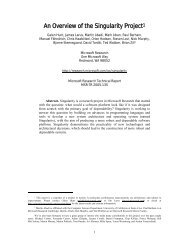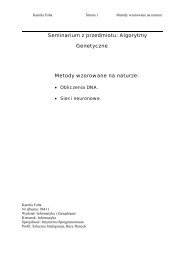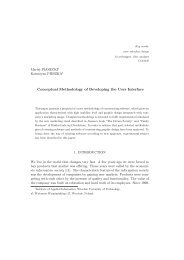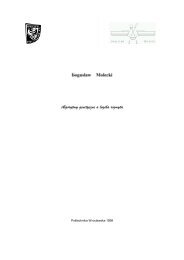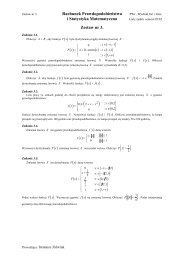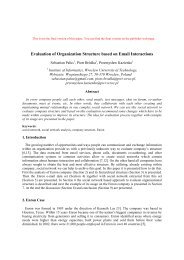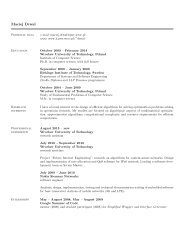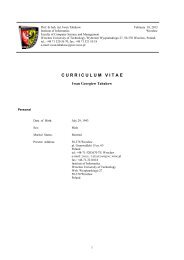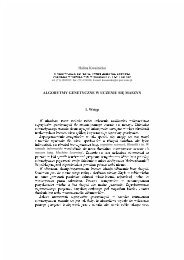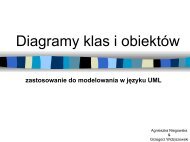Zaproszenie na spotkanie - Instytut Informatyki
Zaproszenie na spotkanie - Instytut Informatyki
Zaproszenie na spotkanie - Instytut Informatyki
You also want an ePaper? Increase the reach of your titles
YUMPU automatically turns print PDFs into web optimized ePapers that Google loves.
Tomasz Filipowski (Politechnika Wrocławska):<br />
Correcting evaluation bias of relatio<strong>na</strong>l classifiers<br />
with network cross validation<br />
Podczas prezentacji zostaną omówione koncepcje przedstawione w artykule “Correcting<br />
evaluation bias of relatio<strong>na</strong>l classifiers with network cross validation” (Jennifer Neville, Brian<br />
Gallagher, Ti<strong>na</strong> Eliassi-Rad and Tao Wang, Knowledge and Information Systems, vol. 30,<br />
pp. 31-55, Springer, 2012).<br />
URL do artykułu<br />
http://dx.doi.org/10.1007/s10115-010-0373-1<br />
Abstrakt<br />
Recently, a number of modeling techniques have been developed for data mining<br />
and machine learning in relatio<strong>na</strong>l and network domains where the instances are not<br />
independent and identically distributed (i.i.d.). These methods specifically exploit the<br />
statistical dependencies among instances in order to improve classification accuracy.<br />
However, there has been little focus on how these same dependencies affect our ability to<br />
draw accurate conclusions about the performance of the models. More specifically, the<br />
complex link structure and attribute dependencies in relatio<strong>na</strong>l data violate the assumptions<br />
of many conventio<strong>na</strong>l statistical tests and make it difficult to use these tests to assess the<br />
models in an unbiased manner. In this work, we examine the task of within-network<br />
classification and the question of whether two algorithms will learn models that will result in<br />
significantly different levels of performance. We show that the commonly used form of<br />
evaluation (paired t-test on overlapping network samples) can result in an u<strong>na</strong>cceptable<br />
level of Type I error. Furthermore, we show that Type I error increases as (1) the correlation<br />
among instances increases and (2) the size of the evaluation set increases (i.e., the<br />
proportion of labeled nodes in the network decreases). We propose a method for network<br />
cross-validation that combined with paired t-tests produces more acceptable levels of Type I<br />
error while still providing reaso<strong>na</strong>ble levels of statistical power (i.e., 1−Type II error).



